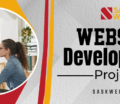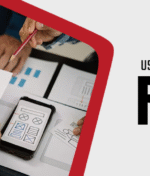
Nowadays, as we all use a variety of web development tools so ensuring their security is paramount for any web application. Developers and businesses must prioritize safeguarding sensitive data and protecting against cyber threats. Choosing the right web application development tools with robust security features can significantly mitigate risks and ensure a secure online presence. In this blog, we will explore 10 essential security features that developers should look for when selecting web application tools for development.
Introduction
Web applications play a vital role in modern business operations by facilitating customer interactions, managing data, and supporting various business functions. However, their extensive adoption also increases the risk of cyberattacks and data breaches. Therefore, it is imperative to integrate robust security measures from the initial stages of development. By doing so, organizations can effectively safeguard user data, enhance trust with their customers, and ensure compliance with regulatory requirements. This proactive approach not only reduces potential security threats but also strengthens the overall security posture of web applications, thereby supporting sustainable business growth in the digital age.
1. Data Encryption
Data encryption is important in securing sensitive information exchanged between users and servers. It’s essential to select development tools that adhere to strong encryption standards. These standards ensure that data remains protected whether it is stored on servers or in transit across networks. By implementing robust encryption practices, web applications can effectively safeguard against unauthorized access and maintain the confidentiality and integrity of sensitive data throughout its lifecycle.
2. Authentication and Authorization
Effective authentication methods secure user identity verification. Authorization controls further restrict user access to specific resources and features based on their assigned roles. These measures collectively enhance web application security by preventing unauthorized access and protecting sensitive data from potential breaches. Implementing robust authentication and authorization practices is essential for maintaining trust with users and meeting regulatory requirements in today’s digital landscape.
3. Secure APIs
Web applications frequently interact with external services and APIs. Your development tools must include secure methods for integrating APIs. This involves implementing authentication tokens to verify the identity of users and systems accessing the API, setting rate limits to control how often and how much data can be retrieved or sent, and ensuring data exchanged through APIs is encrypted to protect it from unauthorized access or interception. These measures help maintain the confidentiality, integrity, and availability of data, safeguarding both the application and its users from potential security threats.
4. Input Validation and Sanitization
To keep web application development tools safe from common security issues, development tools need to have strong systems for checking and cleaning user inputs. These features make sure that any information users enter is carefully examined and cleared of any harmful parts before it’s used by the application. This helps ensure that data meets required standards and is safe to use, preventing unintended execution of malicious code or harmful commands. Such precautions are crucial for protecting web applications from potential cyber threats and attacks.
5. Session Management
Secure session management is very important for keeping user sessions safe. When choosing tools, make sure they handle sessions securely. This includes features like setting session expiration times and using secure and protecting tools against session hijacking. These measures help ensure that users’ sessions are protected from unauthorized access and attacks while they are using your web application.
6. Security Logging and Monitoring
Tools equipped with logging and monitoring capabilities are essential for developers to swiftly identify and address security incidents. They provide real-time alerts, maintain audit logs, and integrate seamlessly with security information and event management systems. These features significantly enhance visibility into the activities within applications, allowing developers to proactively monitor and manage potential threats. By leveraging these capabilities, teams can maintain a vigilant stance against cyber threats, ensuring the security and integrity of their web applications throughout their lifecycle.
7. Secure Configuration Management
In web development, secure configuration management is crucial to protect sensitive data like database credentials and API keys. Development tools ensure these assets are stored securely and enforce best practices in server and application setup. By prioritizing secure storage and adherence to security protocols, these tools mitigate risks such as data breaches and unauthorized access. This proactive approach safeguards information and strengthens web applications against cyber threats, empowering developers to build and maintain secure digital environments confidently.
8. Cross-Site Request Forgery (CSRF) Protection

CSRF attacks take advantage of logged-in user sessions to carry out unauthorized actions. To defend against this threat, opt for development tools that feature CSRF protection. These tools typically use methods like token-based validation or same-site cookie attributes. These measures help ensure that requests made to your web application are legitimate, reducing the risk of malicious actions being performed without the user’s consent. By implementing these protections, web application development tools can safeguard user sessions and enhance the overall security posture of their web applications against CSRF vulnerabilities.
9. Code Quality and Vulnerability Scanning
Tools that assess code quality and conduct vulnerability scans play a crucial role in helping developers identify and fix security issues early in the development cycle. These tools integrate smoothly with static code analyzers and databases that catalogue vulnerabilities, streamlining the assessment process. By leveraging these integrated capabilities, development teams can proactively detect potential weaknesses in their codebase, enabling prompt remediation and bolstering overall application security. This proactive approach enhances resilience against cyber threats, ensuring that web applications maintain robust protection throughout their lifecycle.
10. Compliance and Security Standards
When choosing web development tools, it’s crucial to select ones that align with industry standards to ensure your application handles data securely and respects user privacy. These standards are vital for protecting sensitive information and complying with legal requirements. Tools with built-in compliance features simplify adherence to these standards, making it easier to implement robust data protection measures. By prioritizing compliance, you not only strengthen the security of your web applications but also demonstrate your commitment to user trust and regulatory compliance. This proactive approach not only reduces potential risks but also enhances the reputation of your application as a secure and trustworthy choice in today’s digital environment.
Conclusion
Security is crucial for web application development tools today. Developers should focus on features like data encryption, authentication, secure APIs, and strong session management when choosing web development tools. Tools with logging can quickly find and address security issues, while secure configuration and protection from CSRF attacks make applications stronger. Following stick standards and choosing tools that comply with them keeps data safe and builds user trust. This proactive approach not only improves security but also ensures businesses meet regulations to help them grow safely in the digital age.
Secure your web applications with powerful security features to protect against cyber threats and ensure compliance with industry standards at SaskWebs.






